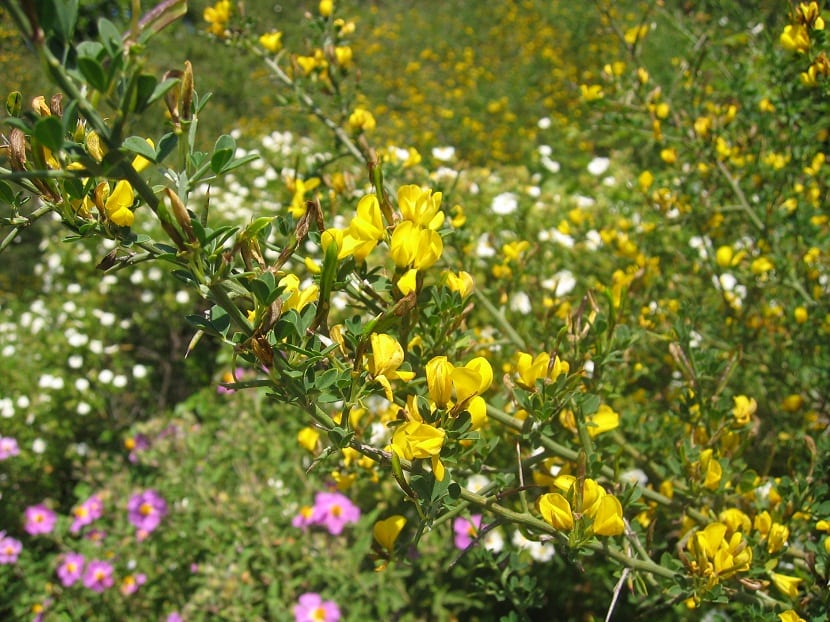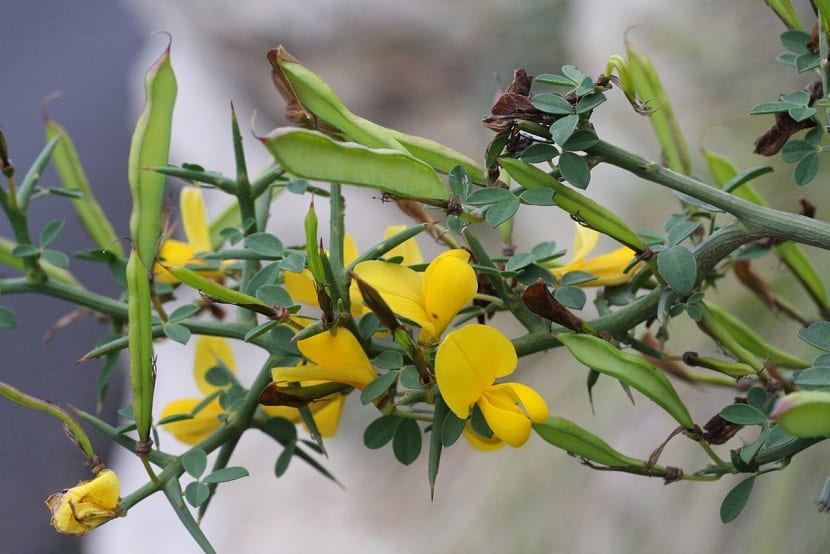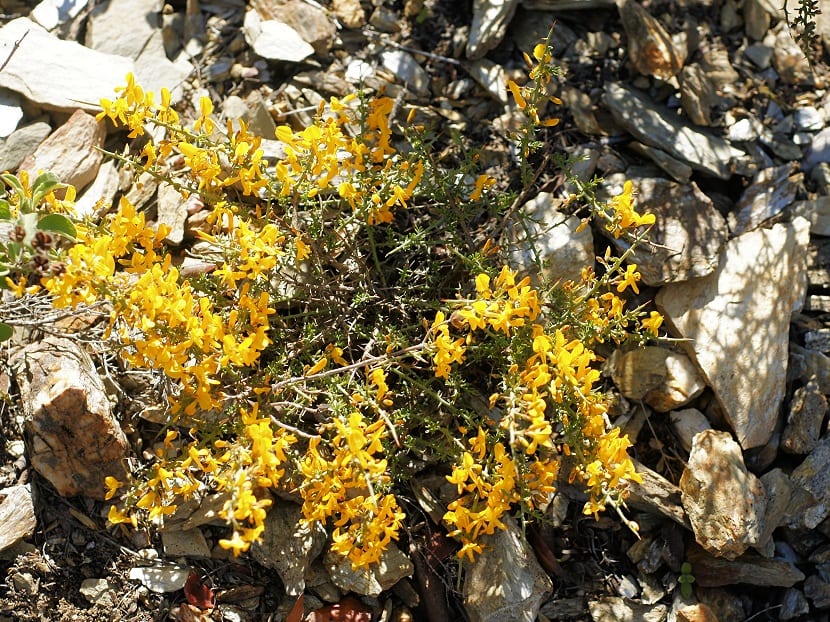
La Calicotome spinosa It is part of the flora of the western Mediterranean that is very varied and abundant. The soils in these areas are conducive to resistant plants that balance the coastal landscape with the showy colors of its inflorescence and resistant vegetation.
These types of shrubs are ideal for these areas and in the case of Aliaga, as it is also known, it is accompanied by striking yellow flowers that adorn the plant with their striking color. They are part of the natural landscaping adorning the soils of Western Europe.
Origin of Calicotome spinosa

The gorse, thorny broom or black gorse, has the scientific name of Calicotome spinosa. It is common to see it in Mediterranean areas from countries like France, Spain, Italy and Algeria. Its flowers adorn the plant between the months of March and May and are usually seen on arid slopes, bushes, rocky soils and especially, in those that have suffered from recent burns.
Flowers were formerly used to make a very useful dye for coloring wool. Also the dried petals served as fuel for fireplaces, as it was very durable and effective. The shrub as such belongs to the family of the fabaceae and the subspecies hispánica, infesta, ligústica Burnat and villosa are known. The term Calicatome comes from Greek and Latin and its meaning is flower bud, envelope or calyx, clearly referring to the shape of the flower. Spinosa is a Latin epithet that means thorns, of course, referring to the thorns present on the stem of the plant.
General characteristics
The initial physical appearance of the Calicotome spinosa it's from a spiny, branched shrub. It measures between one and three meters in height depending on the area and the care provided. It has very sharp and strong axial spikes and individual yellow flowers or small clusters of three or eight flowers appear between March and June.
The leaves are divided into three petiolate leaflets that when they expire they fix nitrogen to the soil. The fruit is a legume of approximately three centimeters that contains from two to nine seeds. The erect stems have 10 or 12 branches with an inverted V shape.
This plant is common of thermophilic scrubs and stony soils with calcium or siliceous from northwestern Italy, southern France, northern Algeria and Libya and in some Spanish region such as the Balearic Islands. The pollination of the Calicotome is entomologous, that is, through insects of its hermaphrodite flowers.
Cultivation and care

The wild origin of the Aliaga makes it occur naturally in lands that can be considered hostile to plant life. However, the possibility that some people are interested in their sowing for ornamental use. For this, the seedlings should be planted in sunny areas, transplanting when they reach a height of five cm and preferably in spring. You want to know when and how to plant this shrub? You should know that They are not plants that adapt to cold climates and do not withstand frost well.
The ideal soil for its development are those with acidic, alkaline or neutral pH. Sandy or clay soils significantly strengthen their roots. They withstand droughts and wet and dry lands alike very well. Should be watered only to maintain moisture and never, should water accumulate so that well-drained soils are a priority for cultivation. Exposure to the sun must be direct, so it is very important to choose the land where it is going to be planted well.
Plagues and diseases
So far there is no reliable information on the type of diseases or pests that can affect this species. However and like others of its genus and species they can be susceptible to some pests or fungi if they are in flooded land that reduces health to the Calicotome spinosa. Therefore, it is advisable to control the risks and keep it exposed directly to solar radiation. If any type of disease occurs, it is preferable to treat it with an organic pesticide.